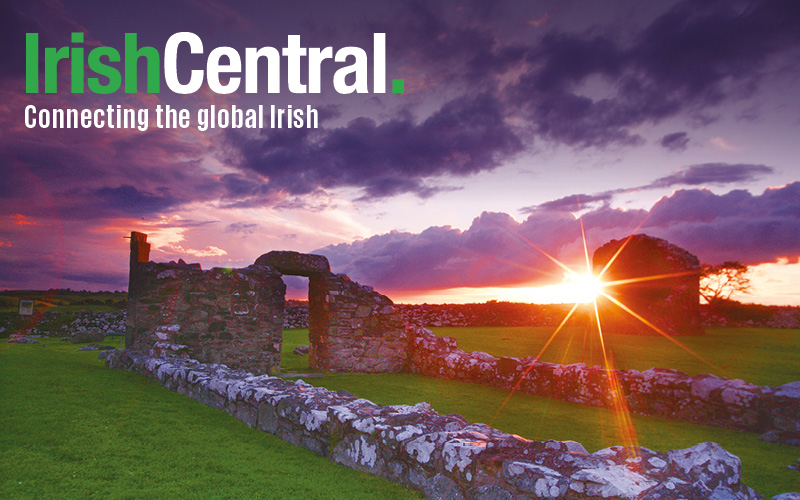Confessio Patricus, the written confessions of St Patrick, have a special resonance today, in this the age of damning reports from Raphoe to Cloyne on an infected church in an era of overwhelmingly disinterested, disconnected younger generations and demoralized older ones.
Patrick apparently was an unbecoming upstart figure to his clerical peers in the mid fifth century, and the Confessio was all about setting the record straight from his own perspective. A fifth century tribunal response, if you like, where the once enslaved Briton shepherd boy of part Roman stock (some sources indicate Kilpatrick, near Glasgow was his birthplace) sets down in his own hand the circumstances that led to his mission to Ireland and how he went about answering the call.
Indeed Dáibhí Ó Croinín a superb lecturer who could entice 9am attendances on hazy Friday mornings in Galway, quipped that Patrick, must have been the only citizen of the Roman empire to have been made a slave and live to tell the tale. It is also a strongly held viewpoint by Ó Croinín and prominent scholars of this period that Patrick the man, arrived into an Ireland that already had embryonic Christian communities and that aspects of these early missions are later combined within the persona of Patrick.
Alleged by his detractors to be poorly educated and misguided in his Irish mission, Patrick was a foreign Christian in a sometimes hostile land, and above else a straight shooter. In the uncalibrated code of internal politicking he was in many ways a sitting duck. Ireland’s patron saint though proved himself a durable sort, much like the faithful masses who revere him every March 17 parading up 5th Avenue (and the enthusiasts, as Malachy McCourt remarked, who stagger down 3rd ) and perpetuate the traditions through unbroken generations.
Once taken a prisoner by pirating Irish, Patrick was inclined to hold hostage to fortune himself and often walked a fine line between pagan natives led by the druids and skeptical church authorities in Britain. Patrick was not afraid to alienate one side or the other but to keep on flowing like old man river in his great mission. If the harsh winters spent herding the flocks of his cruel Irish enslaver were the anvil upon which his spiritual soul was forged, it was with a forgiving, graceful heart that he accepted the Voice of the Irish in a letter from an angel Victoricus calling the holy servant boy to come back and walk amongst the Irish.
The message taken from the altar at the Celtic Times is that Patrick and other apostolic men like him in early Christian Ireland were all but dead to themselves and the world, and animated with humility. This is something that the church today has totally turned its back on.
If our heritage is one of the motors for tourism, recovery and enhanced social capital, our rich ecclesiastical heritage and traditions are a signpost to the best of us that has been lost. For in the ancient wells, monuments and pilgrimages there is not just Christian heritage to be absorbed but ancient cultures where Christ and Caesar and druidic vestiges do battle still.
It is said that the best way to preserve traditional sports is to play them. Well, the best way to connect with ancient paths is to walk them, commune with them, see what made the people tick. This is in the true imraam spirit of St Brendan the Navigator whose life and epic voyages were as much about spiritual inward journeys as outward. My friend Brian Mooney, the greatest living bard of Thomond, quotes Augustine - “Solvantis Ambulantes” – Solved through Walking.
The message is loud and clear, Take to the streets and hills, and venerated old boreens. With this in mind a fine number of people took on the old Celtic routes of Clare last week, in the path of Senan of Scattery, who Patrick once prophesized about. It is hard to believe that this same man 1500 years ago was also Senan of Plouzanne, in Brittany, twinned with Kilrush. That he made it to Rome, and established foundations throughout Europe and Britain, and is also venerated in Wexford in an era before Ryanair and Newcastle Brown Ale weekenders. Put simply, taking in this pilgrim route was an enriching experience. It was like Clarke’s poem, The Blackbird of Derrycairn brought to life where the landscape and the water and the folklore and the history shouts and whispers of the conflux and the strife between pagan and Christian Ireland. People say spin doctoring came in with modern politics, Murdoch and co. – don’t you believe it! It was invented in the mysterious stones and symbols of Clare, Ireland’s great outdoor museum. Even the unfaithful, or the doubtful, anarchists or monarchists, socialists or right leaning, gamblers or mere hikers could take something good from this. Get on the move. Do the Clare Camino, its where tourism first began!




Comments